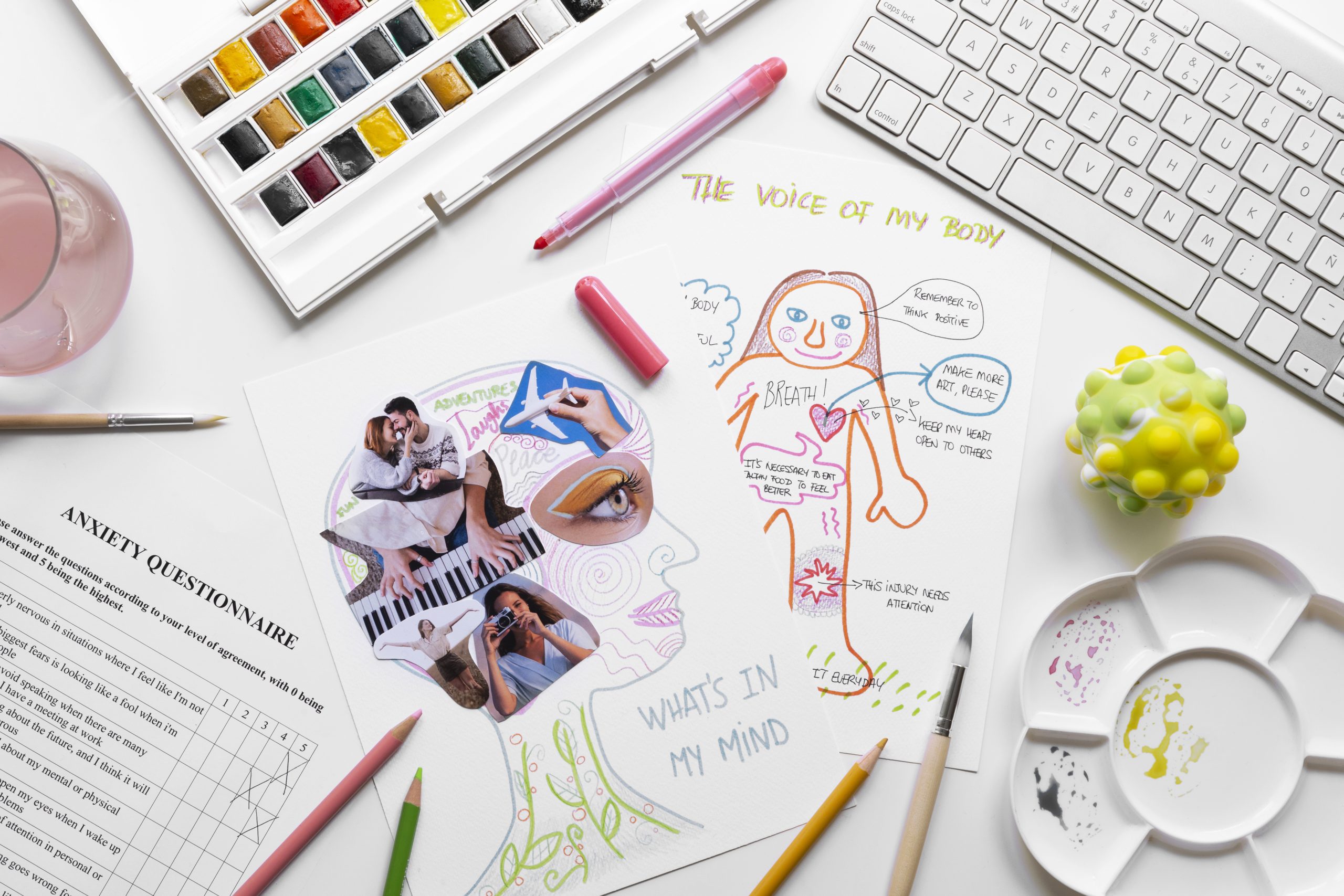The Art of Dream Interpretation: Unlocking the Messages from Your Subconscious
Have you ever woken up from a vivid dream, wondering if there’s a deeper meaning behind the images that danced through your mind? Dreams are mysterious, often perplexing, and yet captivating. For centuries, they’ve been seen as a window into the soul, offering glimpses into the innermost workings of our subconscious. While modern science often frames dreams as random firings of the brain, countless cultures and spiritual traditions believe they carry profound messages waiting to be unlocked.
Imagine your dreams as letters from a friend you’ve known your entire life: your subconscious. Every night, this friend speaks to you in a language rich with symbols, emotions, and metaphors. But here’s the catch—this language isn’t always easy to interpret. That’s where the art of dream interpretation comes into play. By learning how to understand these cryptic messages, you can unlock the hidden insights that lie deep within you.
You might be thinking, “What’s the point of interpreting dreams?” The truth is, that decoding your dreams allows you to tap into your innermost desires, fears, and motivations. Whether seeking guidance on life’s challenges or hoping to understand yourself better, dream interpretation can be a powerful tool. In this journey, I invite you to explore the magic and mystery of your dreams with me. Together, we’ll delve into the fascinating world of subconscious messages and learn how to decode the art of dream interpretation.
Understanding the Power of Dreams
Dreams are more than just fleeting nighttime experiences—they directly connect to the subconscious. Ancient cultures like the Egyptians, Greeks, and Chinese saw dreams as divine messages. Shamans used dreams for healing, while philosophers debated their significance. Even today, psychologists like Carl Jung and Sigmund Freud have used dreams as pathways to explore the human psyche. To truly understand your dreams, you must first recognize their purpose: dreams are a tool for self-reflection and spiritual insight.
Dreams are our subconscious minds’ attempts to communicate with us, offering guidance, warnings, and revelations. By interpreting these messages, we can uncover hidden aspects of ourselves that may be affecting our waking lives. Some dreams may reflect our deepest fears or unresolved trauma, while others provide inspiration or creative breakthroughs. Each dream has its significance, and by learning to interpret them, we can better navigate the waking world with clarity and purpose.
So, how do you begin to decode your dreams? Dream interpretation is both an art and a science. It requires a blend of intuition, self-awareness, and an understanding of standard symbols. While every individual’s dreams are unique, certain archetypes and themes tend to emerge across cultures and periods. In the following sections, we’ll explore the tools, techniques, and insights needed to become fluent in the language of your dreams.
The Symbolism in Dreams: Understanding Common Archetypes
Dreams are often composed of symbols—people, animals, objects, and scenarios that stand in for larger ideas or feelings. These symbols can be highly personal, but many share universal meanings rooted in the collective unconscious. Carl Jung believed these archetypes are inherited symbols reflecting shared human experiences. To decode your dreams, it’s helpful to familiarize yourself with some of the most common dream symbols.
For example, dreaming of water is often associated with emotions, as water represents the flow of feelings and the subconscious mind. Clear, calm water might suggest peace and emotional clarity, while turbulent water could indicate emotional turmoil. Another common symbol is the house, which often represents the self. Different rooms within the house can reflect different aspects of your psyche. The attic might represent hidden thoughts or memories, while the basement could symbolize fears or unconscious material lurking beneath the surface.
It’s also important to recognize personal symbols in your dreams. Something that holds special significance in your waking life may appear in a dream and take on new meaning. By keeping a dream journal, you can track recurring symbols and begin to understand their significance in your inner world. With practice, you’ll find that these symbols are the key to unlocking the deeper messages your dreams are trying to convey.
Interpreting Emotions in Dreams: A Guide to Understanding Feelings
While symbols are important in dreams, emotions are equally critical in understanding their meaning. Often, how you feel in a dream can offer more insight than the actual events unfolding. Emotions in dreams can reflect unresolved feelings from waking life but also serve as a bridge to the subconscious. Dreams can amplify emotions that we may not fully acknowledge while awake, such as fear, anger, or sadness.
For example, if you dream of being chased but feel a sense of calm rather than fear, it could indicate that you’re ready to confront a challenge in your life. Conversely, if you feel intense fear during a relatively benign dream, it might suggest that you’re avoiding an emotional issue that requires your attention. Paying close attention to your emotional reactions in dreams can reveal unresolved conflicts or unexpressed desires.
By recognizing these emotional signals, you can better understand how your subconscious processes your waking life. It’s essential to reflect on these emotions in your current circumstances. Are you feeling overwhelmed, anxious, or stressed in your waking life? Your dreams may be a safe space for your mind to process these feelings, offering insights into managing them more effectively.
Lucid Dreaming: Taking Control of Your Subconscious
For those who want to take dream interpretation to the next level, lucid dreaming offers an exciting opportunity. Lucid dreams occur when you become aware that you’re dreaming and can actively participate in or even control the dream narrative. This heightened awareness allows you to explore your subconscious in real time, offering a unique opportunity to confront fears, ask questions, or simply enjoy fantastical experiences that wouldn’t be possible in waking life.
Lucid dreaming can be an invaluable tool for personal growth. By consciously engaging with your dreams, you can gain more insight into your subconscious mind. For example, if you’re facing a recurring nightmare, you can use lucid dreaming techniques to confront the source of your fear and transform the experience into something empowering. Many also use lucid dreams to practice problem-solving, rehearse real-life situations, or explore creative ideas.
Learning how to lucid dream takes practice, but there are several techniques to help you achieve this state of awareness. One popular method is reality checking, where you regularly question your reality during the day to trigger the same awareness while dreaming. Keeping a dream journal is also essential, as it strengthens your recall and helps you recognize dream patterns. With dedication, you can unlock the incredible potential of lucid dreaming to interact with your subconscious on a deeper level.
The Benefits of Dream Interpretation: Personal Growth and Healing
Interpreting dreams is more than a mystical practice; it’s a powerful tool for personal growth and healing. When you take the time to reflect on your dreams, you gain valuable insights into your emotional and psychological well-being. Dreams can reveal areas of your life that need attention, whether it’s unresolved trauma, unexpressed desires, or ongoing stress. By understanding these messages, you can work toward healing and self-improvement.
Dreams can also be a source of inspiration and creativity. Many artists, writers, and inventors have credited their dreams with sparking innovative ideas. Paying attention to your dreams may solve problems that have eluded you in your waking life. Additionally, dreams can offer guidance during difficult times, helping you navigate life’s challenges with greater clarity and confidence.
Incorporating dream interpretation into your spiritual or self-care practices can lead to profound changes in your life. It’s a way to connect with your inner self, gain new perspectives, and align your actions with your true desires. Whether you’re looking for emotional healing or creative breakthroughs, your dreams can be a powerful ally on your journey.
Discover the Magic of Dream Interpretation
The art of dream interpretation invites you to explore the uncharted territories of your subconscious, offering insights that can lead to personal growth, healing, and spiritual awakening. As you decode the messages hidden within your dreams, you’ll discover new layers of meaning in your sleeping and waking life. So, why not start tonight? Grab a journal, set an intention, and allow your dreams to reveal their secrets.
If you found this exploration of dream interpretation intriguing, I invite you to dive deeper into the magical world of self-discovery. Visit more posts on Nevermore Lane, where we explore mind, body, and spirit mysteries. And hey, let’s chat over coffee—join me for a virtual cup as we discuss your dreams, interpretations, and how they can guide your life’s journey. Let’s unlock the messages of your subconscious together.
Like what you read? Drop me a line – let’s chat over virtual coffee.
~ Chrystal






